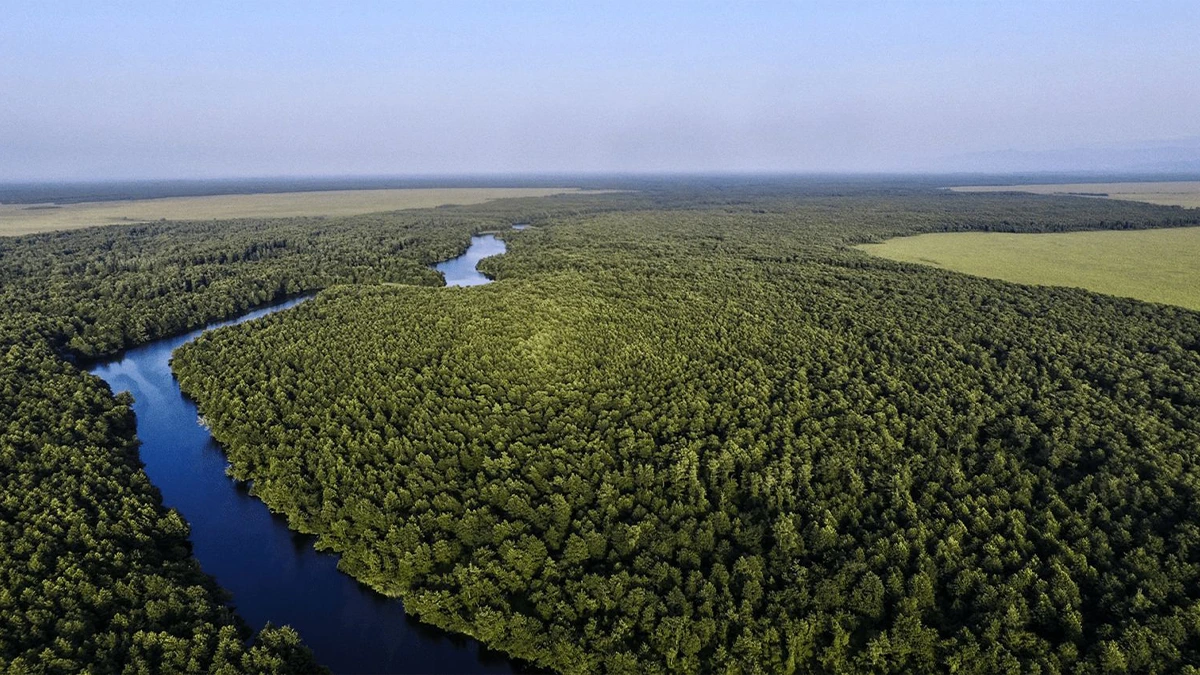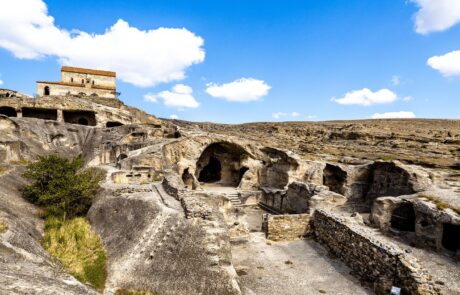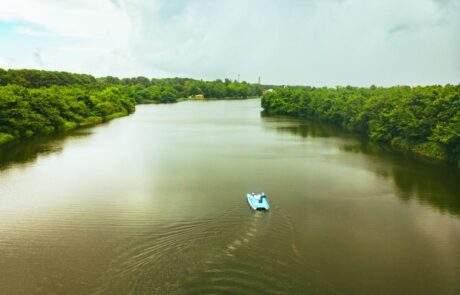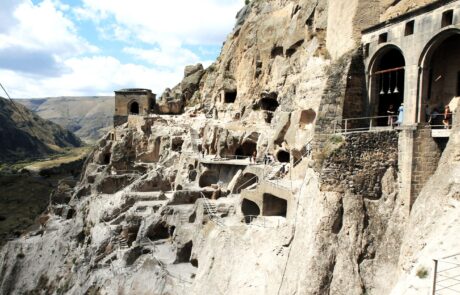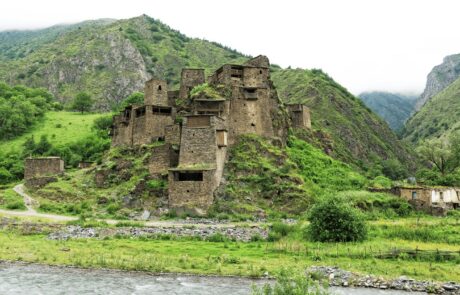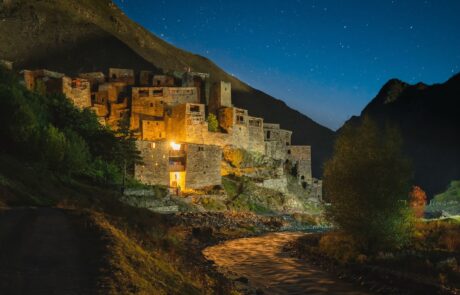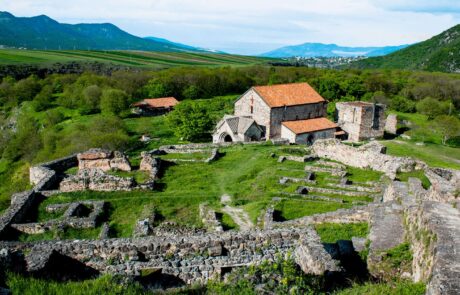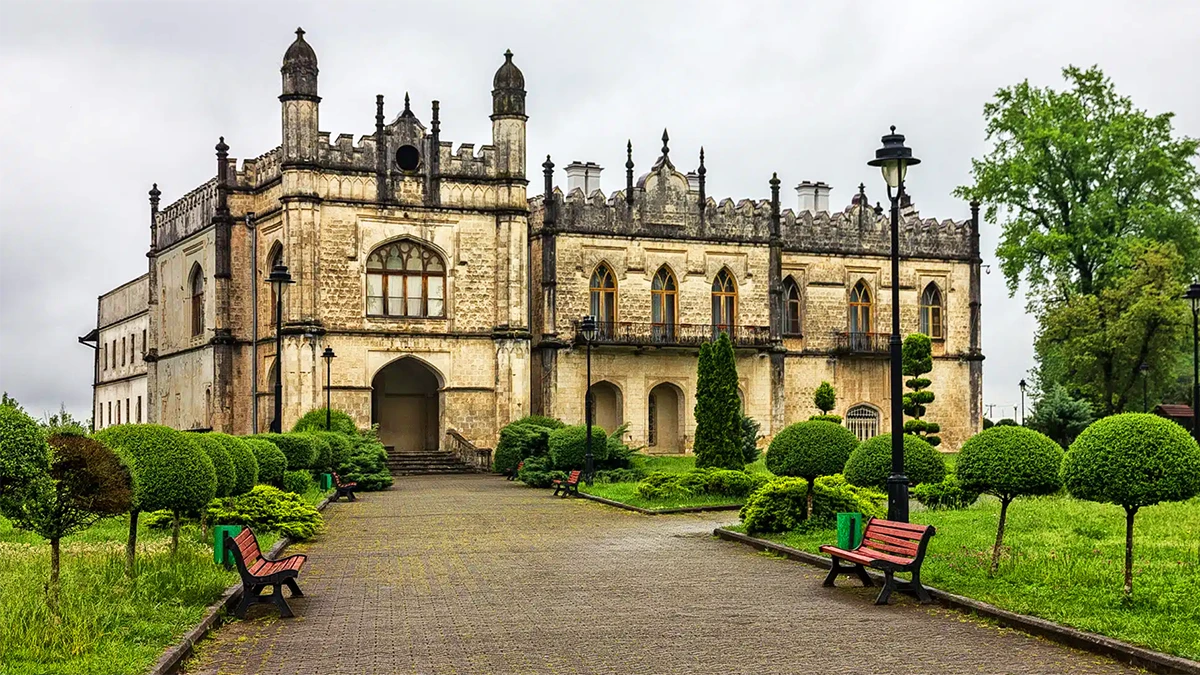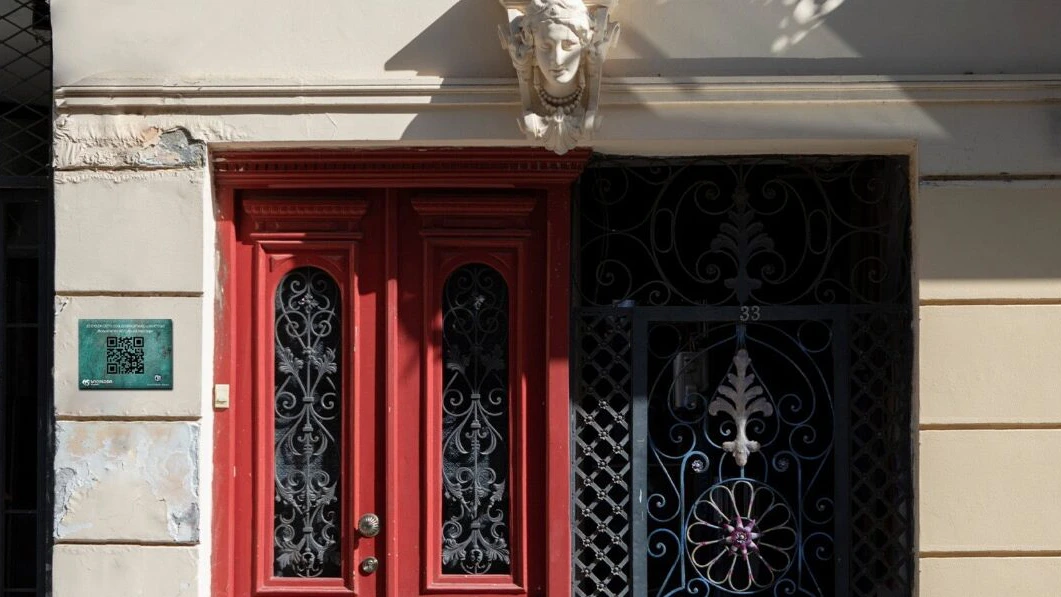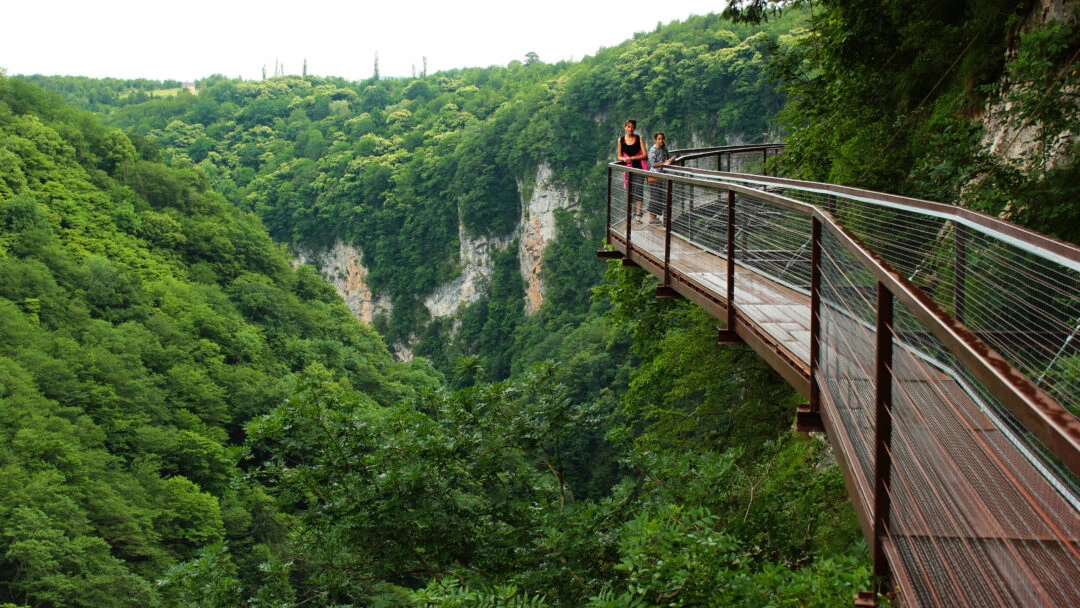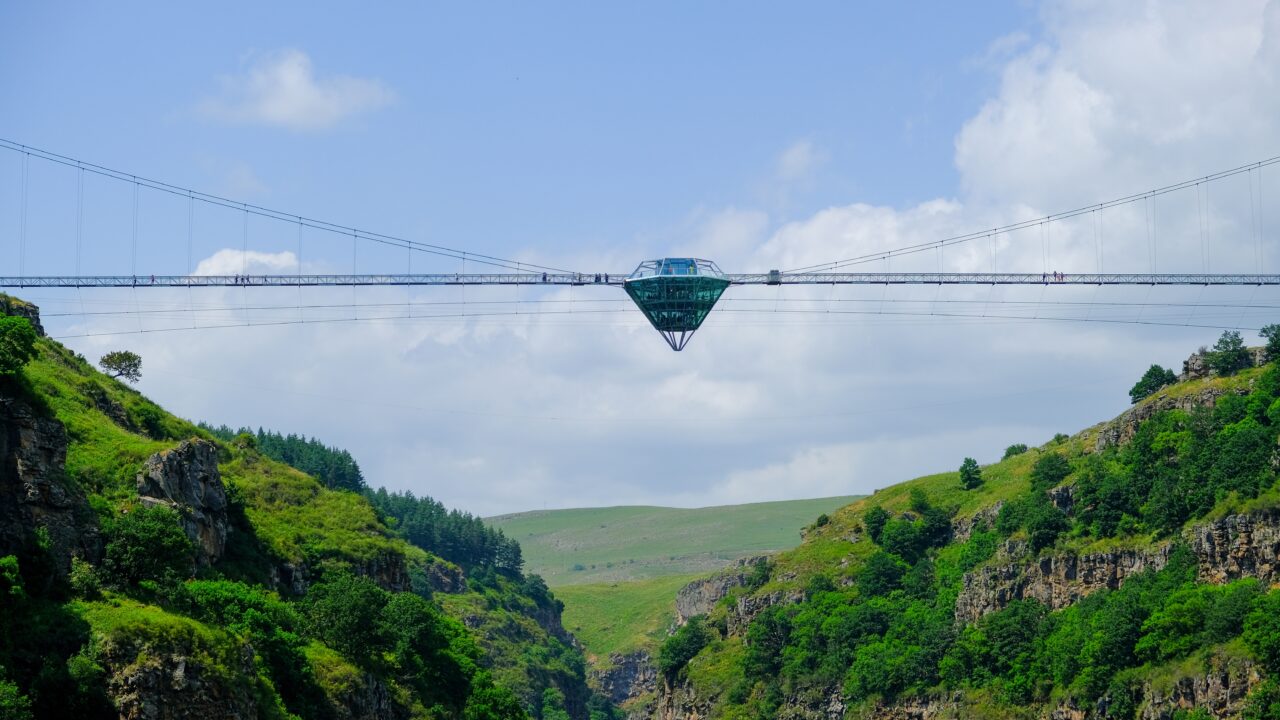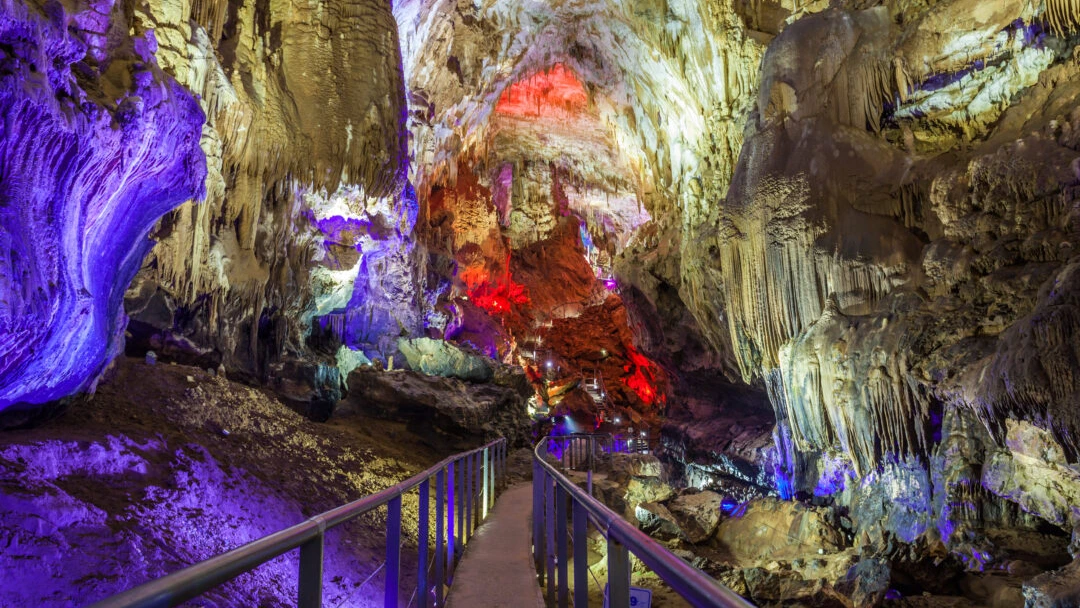Archaeological Sites in Georgia on the UNESCO World Heritage Tentative List
Georgia, with a history that stretches back to early human civilization, holds a wealth of archaeological treasure waiting to be explored. UNESCO has inscribed four monuments on the World Heritage List, and in 2007, fourteen sites were added on the tentative list, which is a lot for such a small country. From a couple of ancient cave cities to the birthplace of the first Europeans, archeological landmarks in Georgia reveal the history of human evolution and display an interesting mix of different cultures and traditions. Fortunately, the most important places are fairly well preserved and accessible to the public throughout the year. This blog will briefly introduce some of the archaeological sites on UNESCO’s World Heritage List, the absolute must-visit places on your trip to the beautiful country.
Uplistsikhe Cave Town
One of Georgia’s oldest and most impressive archaeological sites, Uplistsikhe (the meaning of the name translates to “The Lord’s Fortress”) is an ancient cave town carved into rocky cliffs above the Mtkvari River, 14 km (8.6 m.) east of Gori and just 1.5 hours ride from Tbilisi. Of numerous archaeological and architectural monuments preserved in Uplistsikhe, the oldest dates back to the Early Bronze Age (around 1,000 BC). This once-thriving town had a complex infrastructure that included residential houses, churches, and even a theatre. Walking through the labyrinth of tunnels and hidden chambers, visitors can feel the mysterious atmosphere left behind by the people who used to reside in this religious and cultural center. Today, Uplistsikhe remains open to the public, offering stunning panoramic views of the surrounding landscape.
Vardzia Cave Monastery
Vardzia is another ancient cave site in southern Georgia, a 1.5-hour ride from Tbilisi. The monastic complex dates back to the 12th century and is located in the region of Aspindza in Javakheti. Situated inside the slopes of the Erusheti Mountain on the left bank of the river Mtkvari, the archeological excavations of the place indicate that Vardzia and its surroundings were inhabited as early as the Bronze Age. Visitors have access to the bell tower, the main cathedral, and an additional 15 churches, cave chambers that were used as dwelling places for monks, chapels, and ancient wine cellars. The main church features the earliest portrait of Queen Tamar, the legendary female ruler of Georgia. The town was built on nineteen tiers, with steps leading up to the highest cave-dwelling, at 1462 m (0.8 m.) above sea level. You can visit the tunnel-maze, dining halls, and defense towers and explore the unique stone carvings and wall paintings inside the churches and some of the chambers. The USSR government turned Vardzia into a tourist base first, later opening a museum. In 1989, the monastery went back to conducting the holy mass, and monks returned to the site. Vardzia is among the four archeological sites in Georgia that are inscribed on the UNESCO World Heritage List.
Dmanisi
The 2700-person Dmanisi village in Kvemo Kartli, 90 km (55 m.) south of Tbilisi, is arguably Georgia’s most famous archaeological site and another one on the UNESCO World Heritage List. The village used to be the heart of the Silk Road, with early Bronze Age settlements.
By the 1700s, Arab, Seljuk Turk, Mongol, and Turkoman invasions had thwarted Dmanisi’s medieval trade. In the 20th century, archeologists made a groundbreaking discovery by excavating human remains, yielding unprecedented 1.8-million-year-old fossils. Given ancient Georgian names, the first Europeans are called Zezva and Mzia.
Dmanisi’s archaeological boom draws tourists year-round. Popular attractions include the excavated Dmanisi fortification and the 7th-century Church of Sioni. Tourists can visit the excavation site from March to November as an outdoor museum. The museum displays fossils and the famous Dmanisi skull collection. Many fossils are on display worldwide. The Simon Janashia Museum on Rustaveli Street in Tbilisi houses the permanent exhibit.
Shatili
Shatili, a relatively small but captivating village, showcases some of the most extraordinary examples of architectural craftsmanship. Nestled in the picturesque Mtskheta-Mtianeti region, it lies within the Dusheti municipality. Perched on the northern slopes of the main Caucasus ridge of Tusheti-Khevsureti, this charming spot stands at an impressive altitude of 1400 meters (4593 F.) above sea level. Shatili is the vibrant heart of the local community, attracting visitors from early May to early October. For centuries, Shatili has stood as a sentinel over the northern passes of the country, protecting it against invasions from northern tribes of the Chechens, Ingush, and Dagestanis.
The Shatili complex is situated on rocky mountain slopes, with residential Chardakhi-style houses closely grouped—each lower roof creating a courtyard for the one above it. This type of layout allow visitors to explore every home in the village without stepping on the ground. Shatili is a blend of a residential complex and a fortress that highlights its historical significance. The buildings on the site date back to the 17th or early 18th century. The restoration of Shatili commenced in the 1970s, and in 2007, it was included on UNESCO’s World Heritage List. Visitors can explore step-accessed sanctuaries specifically designed for women, as well as granaries and beer-brewing rooms where you can taste local beer and snacks.
Colchic Rainforests and Wetlands
Situated on the east of the Black Sea, in the Lake Paliastomi river basin, the Kolkheti National Park covers 44,000 hectares of land and water. The park is home to a number of endangered, unique species of plants, animals, fish and birds. Kolkhetian marshes, oaks, box-trees, wing-nut trees, ash-tress, and alder-trees, just to name a few. The yellow horned poppy and the sea daffodil are among the endangered plants that are preserved on the territory of the park. You might come across a stray deer, coypu, or meet otters in lakes along the walking paths.
The park has been ranked on the third place on the list of bird migration stops. Birdwatching is one of the main attractions and touristic activities anyone can take place in. The park is open all year round, so you can observe waterfowls and other birds from special towers set up for a more comfortable birdwatching experience. Aside from waterfowls, there are up to 200 different bird species that reside within the park territories, including six different endangered species of eagles.
Find peace in untouched landscapes by yourself or with your family and friends. Colchic rainforests and wetlands are the perfect place to visit if you want to breathe life into your own story when visiting Georgia.
There are many other archeological sites to explore in Georgia. However, the landmarks on this list are all must-visit places on a trip to Georgia. From prehistoric human settlements to medieval religious, cultural, and economic centers, they capture the depth and diversity of the country’s heritage. Each site brings Georgian history to life, offers beautiful landscapes, cultural immersion, and overall, unforgettable experiences.
We created Memo — a brand where Georgian memories come to life.
Visit Memo By GSH and take a piece of Georgia with you – Www.memories.ge

